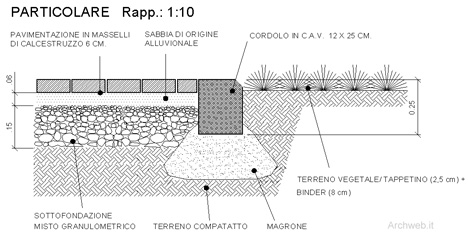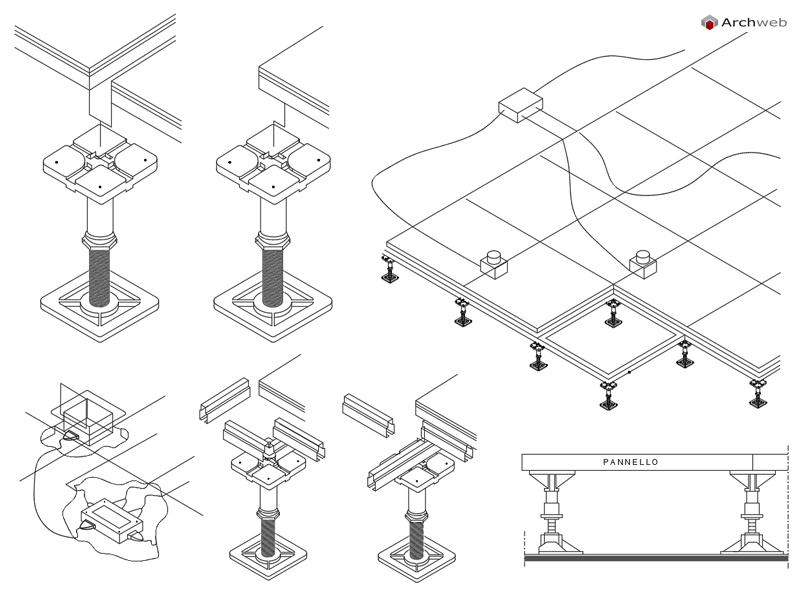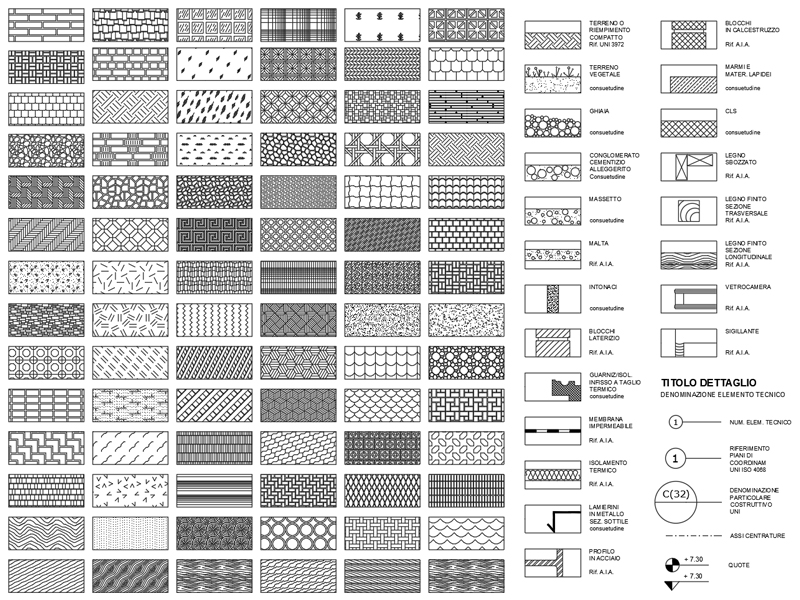The wooden floor
Practical guide to choosing
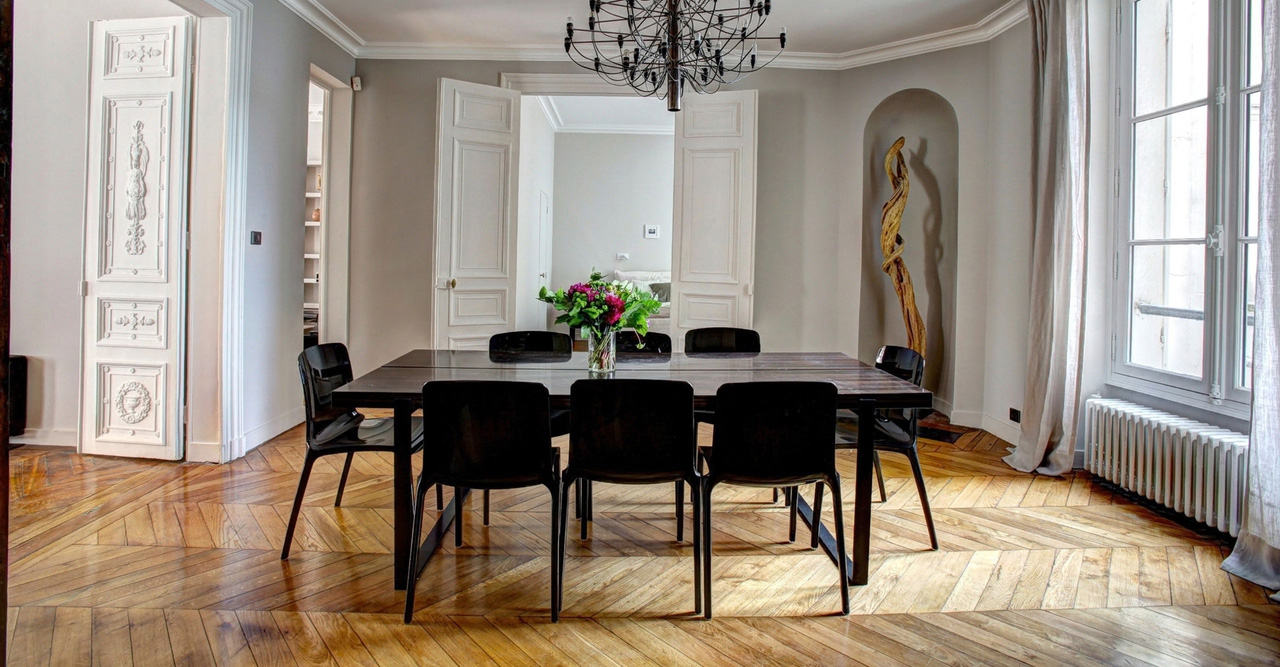
The wooden floor: a practical guide to choosing
Elegant and timeless, parquet still represents one of the most used finishes in interiors today, thanks to its aesthetic beauty and the numerous advantages it entails. However, it is necessary to pay close attention to the choice of essence, type and installation, as these characters will determine the final result and future maintenance. Furthermore, it is important to entrust the installation to a qualified parquettist, as it is a delicate and multi-faceted material.
Below, a short guide will help you to learn more about this precious material and make more informed choices for the floors of your home.
Types of wood used in flooring
Depending on your tastes and personal needs, you can choose from many types of wood used for the construction of the floors.
Initially it is necessary to check the type of environment in which you want to insert the parquet; this can be internal or external and consequently, to make the best choice, it is necessary to know the resistance of the material with respect to atmospheric agents. Subsequently, it is good to analyze the intended use of the space that will host the wooden floor: the expected passage flows, the more or less consistent humidity, the presence of underfloor heating. All these factors can influence the final choice, as a parquet in the bathroom, in order to last over time, must have specific characteristics compared to that inserted in other spaces of the house.
The first major differentiation concerns two families of materials: solid wood and pre-finished wood. These are two very different solutions and both have some pros and cons.
The first type has represented for years the only choice for those who wanted to install a parquet inside their home. Resistant, valuable and with a high cost, it consists of a single wooden plank, able to be preserved over time. This product, over the years, can be sanded to maintain its initial value.
Pre-finished wood has found widespread use in recent decades, thanks to its lower cost and simpler and faster installation. In this case, the list consists of a first layer of chipboard and a more superficial layer of noble wood of varying thickness. It is therefore evident that this type cannot be subjected to multiple processes such as solid wood, since the layer of pure wood is much thinner. In fact, in the first case, it reaches thicknesses of 1 cm, while in pre-finished wood a maximum of 5 mm.
The second difference concerns the essence used; this choice depends a lot on the use of the environment and the type of wood family chosen. Oak is one of the most popular types, thanks to its resistance, excellent aesthetic performance and versatility of use. Equally elegant but more expensive is wenge, which is darker in color than oak. Ash follows, characterized by marked and evident veins compared to the color of the plank. Instead, for those who love a rustic effect, oak will be perfect, as it is rich in knots. Furthermore, it is one of the strongest and most durable types.
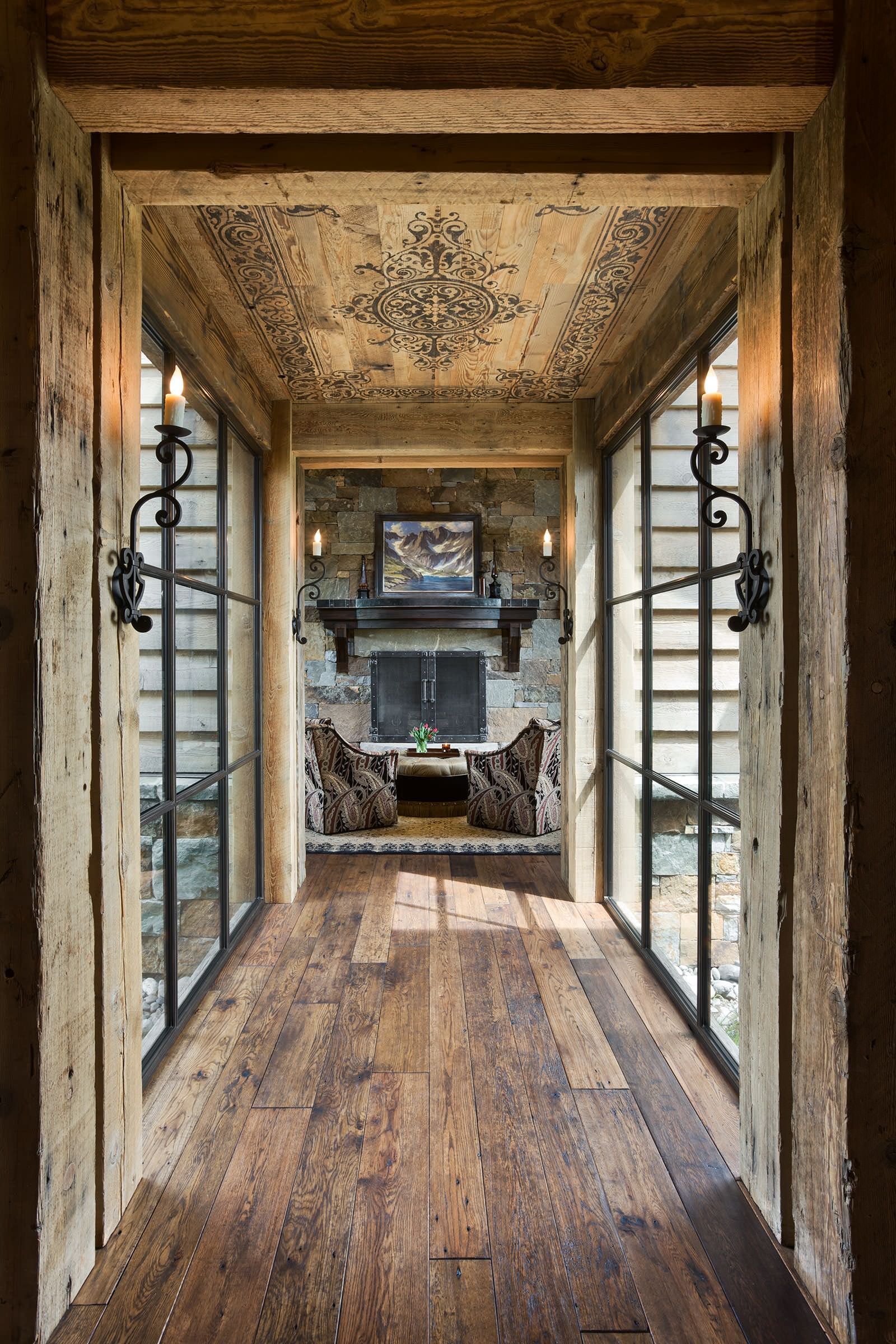
Teak and iroko are particularly suitable for humid environments such as bathrooms and kitchens, but also for outdoor spaces such as terraces and loggias. These are two types of wood with high performance in terms of resistance and durability; moreover, thanks to their properties, they can also be applied on surfaces with underfloor heating. Finally, for those who want to opt for a 100% sustainable choice, bamboo, an eco-friendly material with high performance in terms of solidity, will be perfect.
Types of laying and geometry for parquet
Once the essence has been defined, it is necessary to choose the type of installation and the geometry with which you intend to compose your wooden floor. As for the installation, there are three main techniques for fixing the wooden boards to the floor; the first is the oldest one which involves nailing each single plank with nails or screws. The second, on the other hand, uses glues to fix the wood to the surface of the floor. Finally, an intermediate technique is represented by the floating laying, in which the planks are anchored to each other and interlocked, so as to rest on the floor without definitive fixing systems. Traditional laying has always been nailed down, but with the advent of pre-finished parquet, that through gluing has become more widespread.
Another very important aspect when choosing to install a wooden floor concerns the geometry of the elements since it determines the aesthetic result of the whole. Depending on the size and shape of the wooden components, you can opt for a ship deck, regular formwork, herringbone, square and band and rib laying. This choice also depends on the physical characteristics of the environment being finished.
The ship deck includes elements of the same size but placed in a random and parallel manner, while the regular formwork arrangement sees a third element arranged at the head between the two parallel elements.
As for the herringbone laying, it can be divided in turn between: italian plug, french plug and hungarian plug. What distinguishes the three types is the angle that is formed by the combination of two elements. In fact, in the Italian spine the two wooden slats form an angle of 90°, in the French one an angle of 45° and in the Hungarian one of 30° or 60°, depending on the choice. In all cases the elements are of equal size.
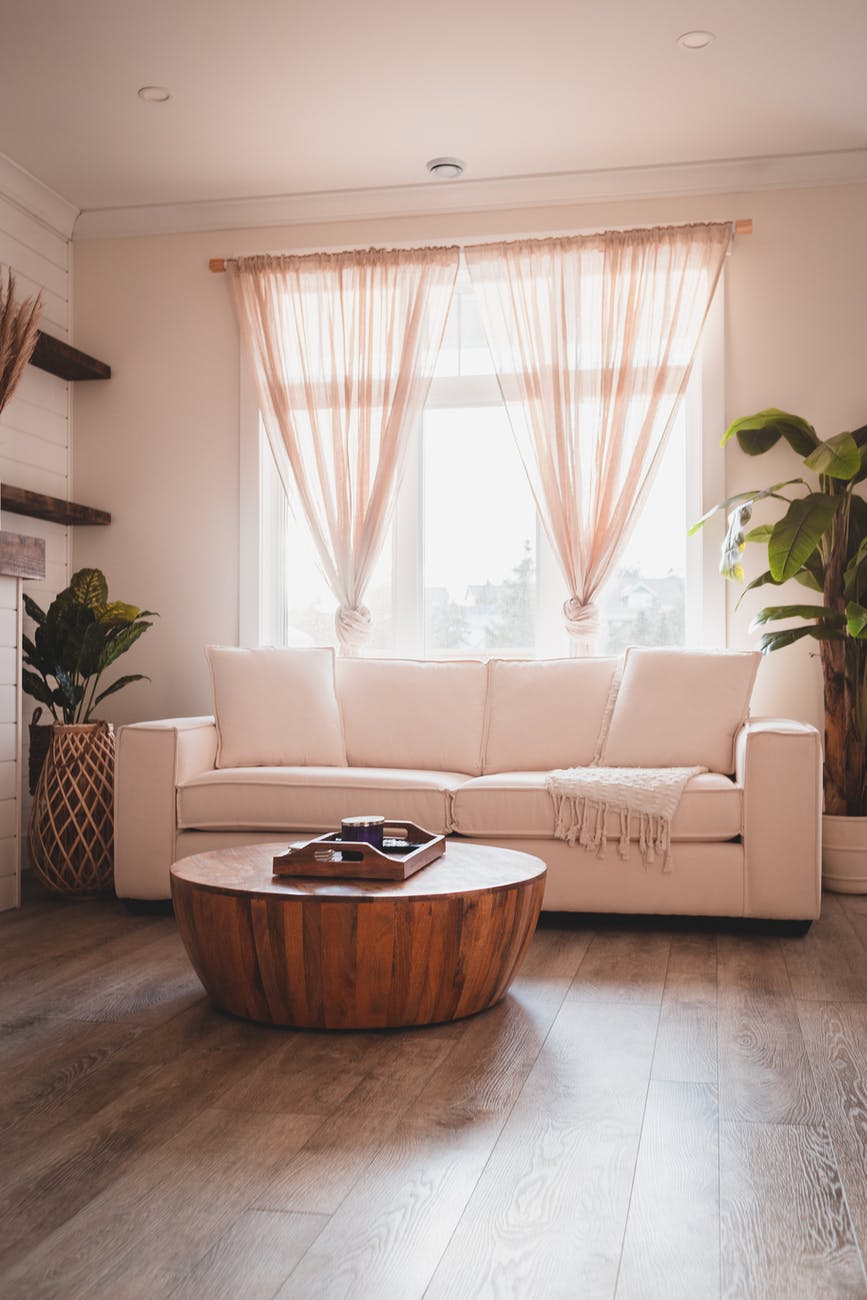
Among the most demanding and refined poses there are the checkered one and the band and band one.
In the first, the wooden elements are positioned together to give shape to a square where often, the colors and the internal shapes vary. The goal is to create a real decorative design. In the second case, as the word indicates, the lists are positioned according to taste and are subsequently joined at the perimeter level by bands of different shape than the rest.
It should be borne in mind that before any type of intervention, it is essential to check the current state of the screed on which the wooden floor will be laid. In fact, it will always be necessary to have a vapor barrier interposed between the floor and the screed, so that the parquet is protected from moisture and any damage.
To view some geometries relating to a wooden floor click here
The advantages and disadvantages of parquet
Parquet is now considered a classic that never sets, thanks to its beauty and versatility that allows it to be used in environments with different intended uses. The advantages of this choice are many and they all contribute to increasing the well-being of the user.
The environment that boasts a wooden finish increases its value both in economic terms and in terms of living comfort. In fact, the atmosphere it recreates makes the space pleasing to the eye, gives personality to the room and makes it more vital thanks to the reference to the natural world. Furthermore, the sense of pleasure in walking barefoot on the ground will be priceless, given the warmth and beauty transmitted by the material. Being a living matter, over time it will adapt to the environment and its thermo-hygrometric conditions.
Another positive aspect concerns the insulating capacity of the wooden floor from a thermal and acoustic point of view. In fact, in winter, it stays warmer than many other materials and if accompanied by special insulating panels it can increase its acoustic performances.
From an aesthetic point of view, in addition to representing a fine finish, it guarantees a wide choice of colors, veins, geometries, so as to satisfy the most diverse needs and to return a unique result.
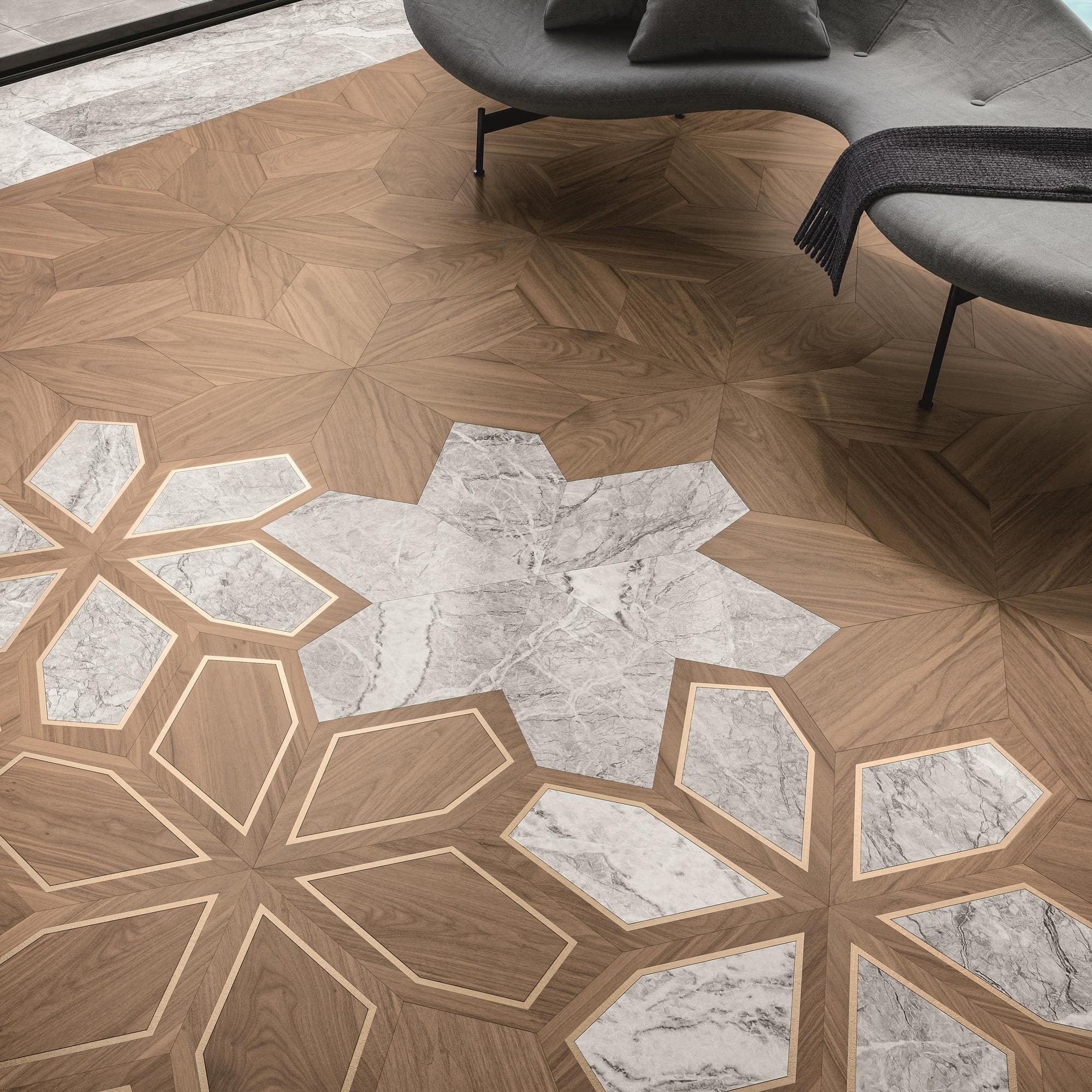
(See plan drawing) Source: © Foglie d’Oro by Latifoglia S.r.l. – Modulo Design Azalea
However, although there are many positive aspects of this choice, it should be noted that some disadvantages also remain. First of all the high cost compared to other finishes that emulate the same aesthetic result but are made entirely of ceramics. Unlike the latter, wood requires more demanding maintenance and very careful care as it is delicate and subject to lines and scratches. Moreover, after several years, it is necessary to carry out smoothing treatments to restore the initial beauty and these interventions involve a significant expense. Finally, as already mentioned, being a living material, it can tighten or expand depending on the climatic conditions of the environment.
All these aspects may vary depending on the type of wood: if solid wood requires a higher cost and greater care than pre-finished wood, it is also true that it is more durable over time. In addition, even if pre-finished wood is more stable to humidity than solid wood, the latter boasts a higher insulating power.
In conclusion, each specific choice involves some pros and cons, it is up to the user to make careful and measured choices according to the needs and budget available.
To get some more advice and a generic picture on the typological choice, laying and geometry of wooden floors, a moodboard from which to draw inspiration.
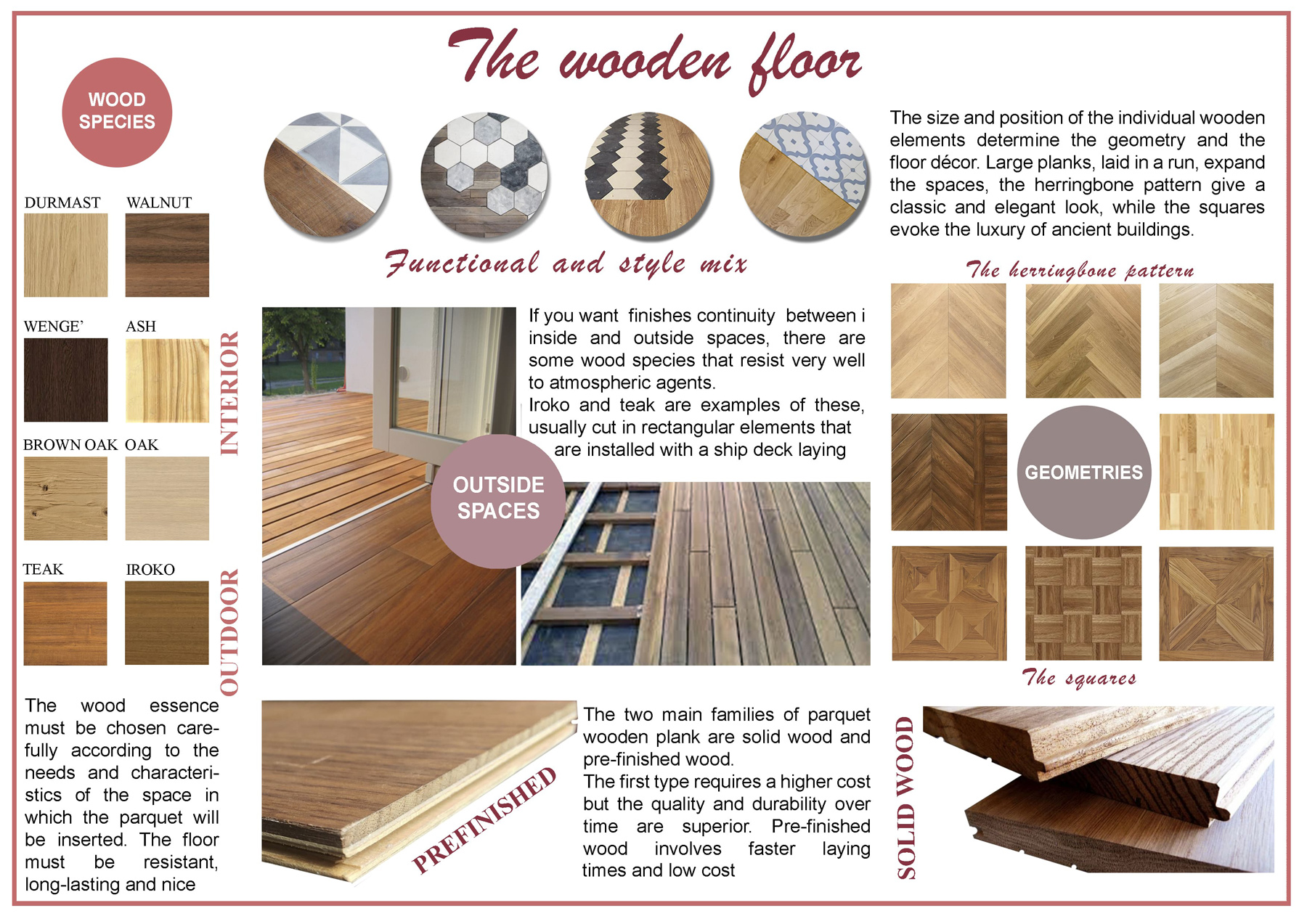
Let’s dispel some false myths about parquet
During the renovation of the house, some doubts often arise among those who would like to install parquet in their rooms. One of these concerns the widespread idea that the wooden floor is not compatible with the underfloor heating system. This opinion is not always true as it is sufficient to analyze some elements before intervening on the floor.
First, it will be good to check the presence of a correct vapor barrier between the insulating layer and the one where the heating system is located. At a later stage, if you decide to install the parquet, depending on the case, you must choose between the glued and the floating installation, with the exception of the nailed one. It is also preferable that the wooden elements have a small size and that the essence is stable, in order to minimize the deformation of the material linked to the heat of the radiant system.
Another obstacle that often binds the installation of a parquet is the intended use of the environment. Often, kitchens and bathrooms are seen as the number one enemies of the wooden floor, due to the presence of a high level of humidity and the danger that corrosive substances could accidentally fall to the ground. However, thanks to some types of wood resistant to water and waterproof treatments, the choice of inserting parquet also in this type of environment is increasingly widespread. An example of the essence used for this purpose is the national walnut parquet, of medium resistance and also suitable for conditions of medium humidity.
Currently, the installation of parquet in the kitchen with tiles has been very successful, an innovative solution that guarantees visual continuity and maximum functionality. Thanks to the skilful installation of professionals in the sector, it will be possible to gradually reduce the wooden planks, giving space to ceramics and resins.
In any case, it is important to remember to promptly dry any water that has fallen on the floor in order to reduce the risk of damaging the wooden elements and to ventilate the rooms to contain the humidity.
A similar argument is made with outdoor spaces in which the wooden floor is more exposed to atmospheric agents. Also in this case, the solution is at hand: some types of wood are specifically designed to be installed outdoors. An example of this is teak, a water-repellent wooden material that is used for the construction of furnishings and finishes. Thanks to its beauty it returns a valuable atmosphere giving a plus value to terraces and loggias, however it must always be kept in mind that, being a natural material, it requires careful maintenance over time and can be subject to wear caused by the prolonged action of the external agents.
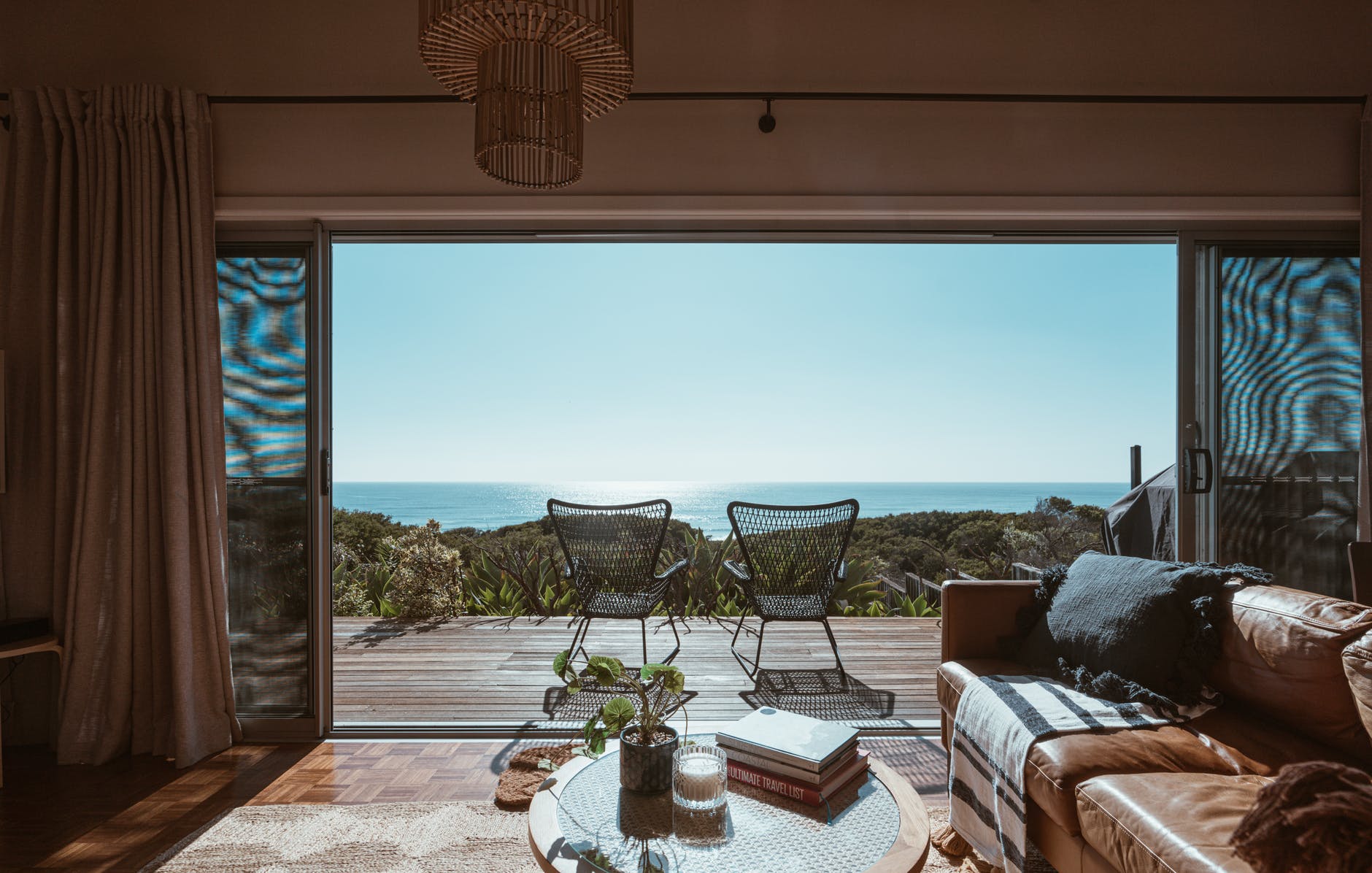
It is therefore the best choice for any type of wooden floor, it requires a good analysis of the climatic conditions of the place, the intended use of the environment and the needs of the individual.






























































